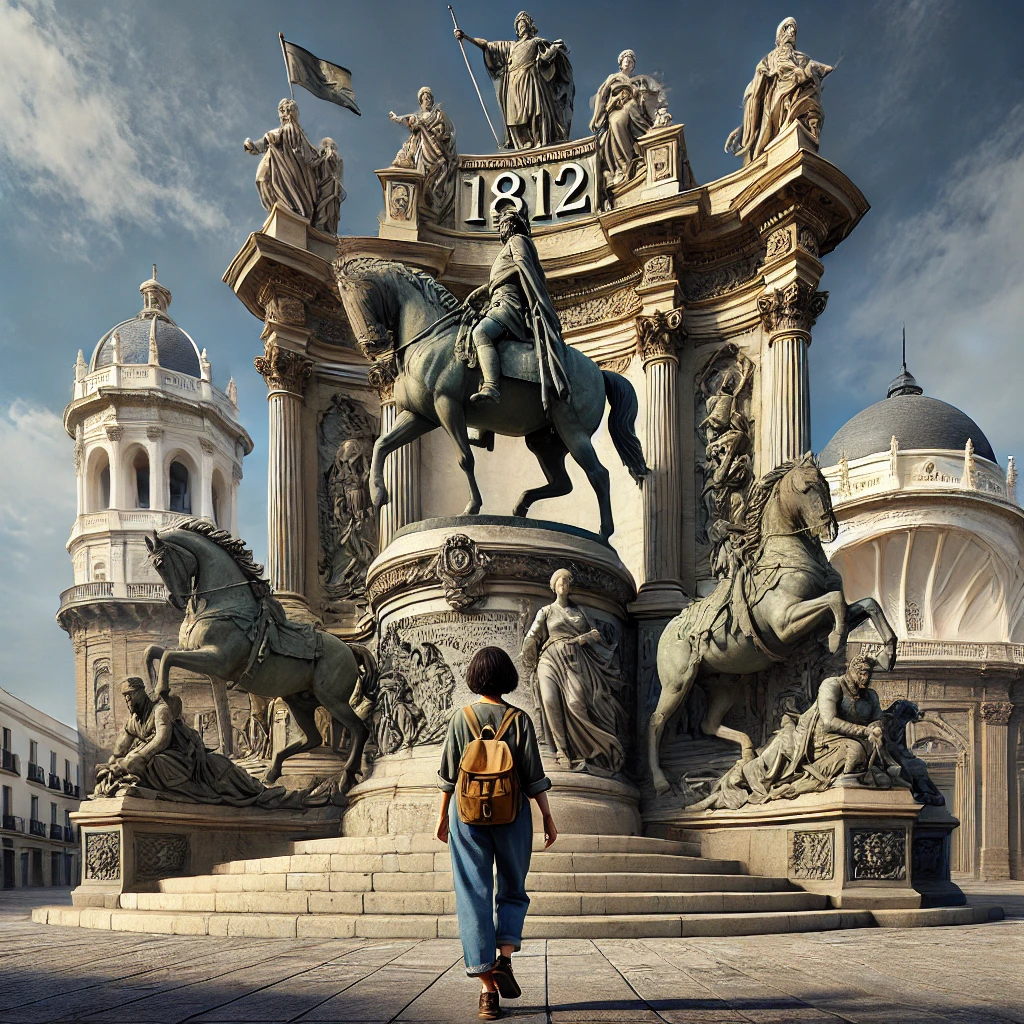ChatGPT:Cádiz, Spain, is a historic port city located in the southwestern part of the country, in the autonomous community of Andalusia. Known as one of the oldest continuously inhabited cities in Western Europe, Cádiz boasts a rich history that dates back over 3,000 years. The city is situated on a narrow peninsula surrounded by the Atlantic Ocean, offering stunning coastal views and a mild maritime climate.
Key features of Cádiz include:
- Historic Architecture: Cádiz is home to numerous historical landmarks, including the Cádiz Cathedral, a baroque-neoclassical structure with a golden dome, and the Torre Tavira, an 18th-century watchtower offering panoramic views of the city.
- Beaches: The city is renowned for its beautiful beaches, such as La Caleta, which is popular for its picturesque setting between two castles, and Playa de la Victoria, known for its long stretch of golden sand.
- Cultural Festivals: Cádiz hosts vibrant cultural events, most notably the Carnival of Cádiz, one of Spain’s most famous and lively carnivals featuring elaborate costumes, parades, and musical performances.
- Historical Significance: The city’s strategic location has made it a crucial naval base throughout history. It played significant roles during the Age of Exploration and the Spanish-American War.
- Cuisine: Cádiz offers a delectable array of seafood dishes, reflecting its maritime heritage. Tapas bars and seafood restaurants are abundant, serving local specialties like fried fish (pescaito frito) and red tuna.
- Old Town Charm: The narrow, winding streets of the old town are filled with whitewashed buildings, charming plazas, and a lively market, offering a glimpse into traditional Andalusian life.
Cádiz combines historical allure, cultural vibrancy, and coastal beauty, making it a unique and captivating destination.
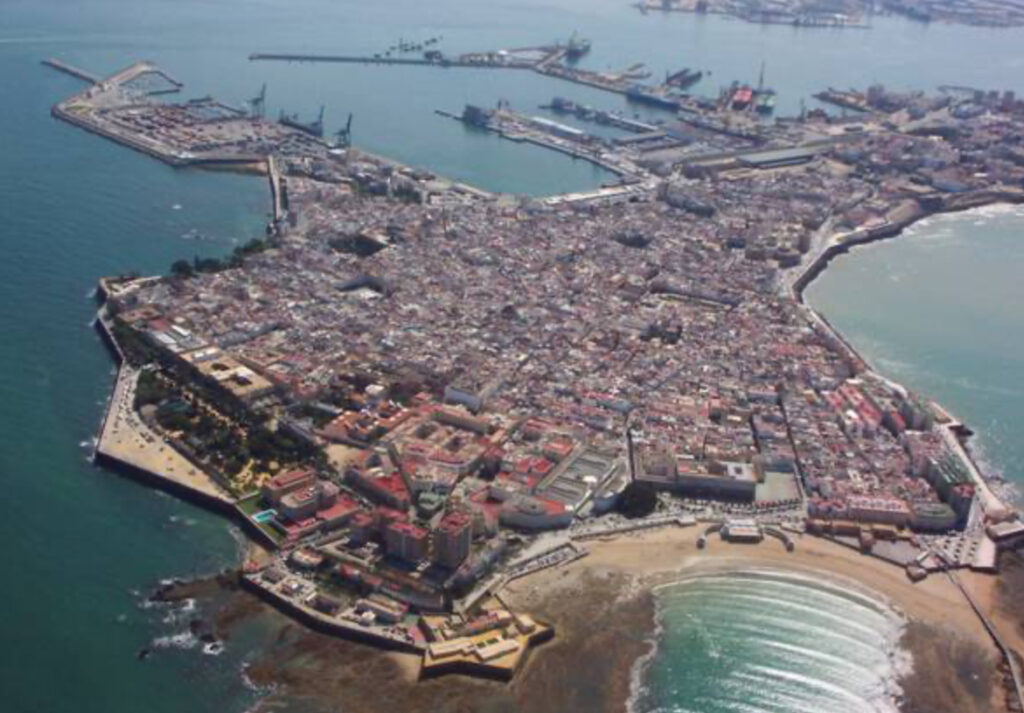
Cádiz has a rich and varied history that reflects its strategic importance and cultural development over millennia. Here’s an overview of its origin, history, and development:
Origin
- Phoenician Foundation: Cádiz was founded by the Phoenicians around 1104 BCE, under the name Gadir, meaning “walled stronghold.” The Phoenicians, renowned for their maritime trade, used Gadir as a trading post and a base for their ventures into the Atlantic Ocean.
Ancient History
- Carthaginian and Roman Periods:
- Carthaginian Control: Following the decline of the Phoenicians, Gadir came under the control of Carthage, another powerful Phoenician colony. It served as a crucial naval base during the Punic Wars against Rome.
- Roman Era: After the fall of Carthage, Gadir became part of the Roman Empire and was known as Gades. Under Roman rule, it flourished as a significant port and economic hub. The city enjoyed considerable autonomy and prosperity, evidenced by the construction of important structures like the theater, aqueducts, and a large forum.
Medieval Period
- Visigothic and Islamic Rule:
- Visigothic Era: After the fall of the Roman Empire, Cádiz fell under the rule of the Visigoths in the early 5th century CE. However, this period was marked by relative decline.
- Islamic Conquest: In 711 CE, the city was captured by the Moors and became part of the Umayyad Caliphate. It was later incorporated into the Caliphate of Córdoba and experienced a revival in trade and cultural development.
Reconquista and Early Modern Period
- Christian Reconquest:
- Christian Control: Cádiz was recaptured by the Kingdom of Castile in 1262 during the Reconquista. The city’s strategic importance grew as it became a key port for the Castilian fleet.
- Age of Exploration:
- Gateway to the New World: With the discovery of the Americas in the late 15th century, Cádiz’s significance skyrocketed. It became one of Spain’s primary ports for expeditions and trade with the New World, sharing prominence with Seville.
- Defense and Fortification: Due to its importance, Cádiz was heavily fortified to protect against pirates and foreign invasions. The construction of robust defensive walls and bastions took place during this time.
Modern History
- 18th Century Golden Age:
- Economic Boom: The 18th century marked a golden age for Cádiz as it became the center of Spanish trade with the Americas. The Casa de Contratación, initially based in Seville, was moved to Cádiz, solidifying its economic preeminence.
- Enlightenment and Culture: The city became a hub of Enlightenment ideas and culture, with the establishment of institutions like the Royal Academy of Fine Arts.
- 19th Century Turmoil:
- Napoleonic Wars: During the Napoleonic Wars, Cádiz became the provisional capital of Spain and the site of the drafting of the Spanish Constitution of 1812, also known as La Pepa, one of the first liberal constitutions in Europe.
- Economic Decline: The loss of Spain’s American colonies in the early 19th century led to a decline in Cádiz’s economic fortunes, as the trade monopoly ended.
Contemporary Development
- 20th Century to Present:
- Modernization: In the 20th century, Cádiz underwent significant modernization, with improvements in infrastructure and the expansion of its port facilities.
- Tourism and Culture: Today, Cádiz is a vibrant city known for its cultural festivals, historic sites, and beautiful beaches. It has embraced tourism as a key part of its economy, while also preserving its rich historical and architectural heritage.
Cádiz’s history is a testament to its resilience and adaptability, from its ancient Phoenician roots to its role in modern Spain. Its development over the centuries reflects the broader historical currents that have shaped the Mediterranean and Atlantic worlds.
Cádiz is still an active and important sea port. The Port of Cádiz plays a significant role in the region’s economy, handling a wide variety of cargo and serving as a hub for both commercial and passenger traffic. The port is strategically located along major shipping routes and is known for its deep waters and extensive facilities.
Key Aspects of the Port of Cádiz:
- Commercial Shipping: The port handles various types of cargo, including containers, bulk goods, and general merchandise. It is an essential gateway for trade between Europe, Africa, and the Americas.
- Passenger Traffic: Cádiz is a popular stop for cruise ships, attracting thousands of tourists each year. The port’s proximity to the city center makes it convenient for visitors to explore Cádiz’s historical and cultural attractions.
- Fishing Industry: The port supports a thriving fishing industry, with numerous fishing boats and related businesses operating in the area. Fresh seafood from Cádiz is renowned and contributes to the local cuisine.
- Naval Base: Cádiz has a long history as a naval base, and it continues to host naval facilities and operations. The Spanish Navy has a significant presence in the region.
- Economic Impact: The port is a major economic driver for Cádiz, providing jobs and supporting local businesses. It also facilitates international trade and tourism, which are crucial to the city’s economy.
In summary, Cádiz remains a vibrant and active sea port, integral to its economic vitality and cultural heritage.
Cádiz, with its rich history and stunning coastal location, offers numerous historical monuments and tourist attractions. Here are some of the key sites to visit:
Historical Monuments
- Cádiz Cathedral: Also known as the “New Cathedral,” this baroque-neoclassical cathedral features a distinctive golden dome and offers stunning views from its bell tower.
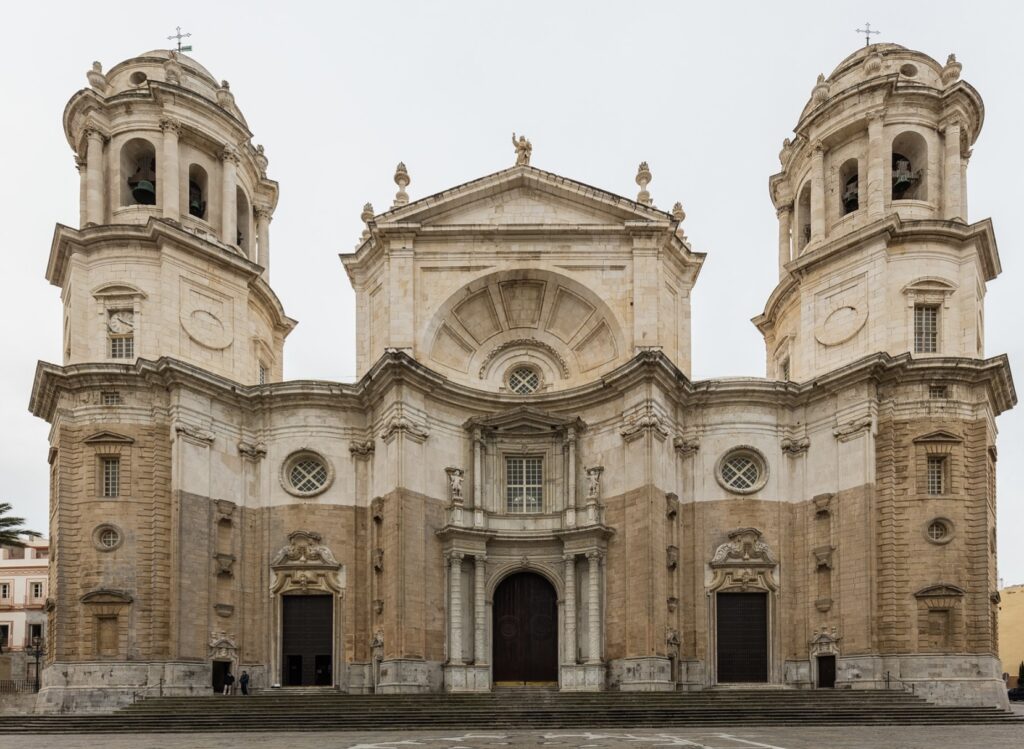
- Torre Tavira: An 18th-century watchtower that provides panoramic views of the city. It also houses a camera obscura, which projects live images of the city.
- Roman Theatre: Discovered in 1980, this ancient Roman theatre is one of the largest of its kind in Spain and dates back to the 1st century BCE.
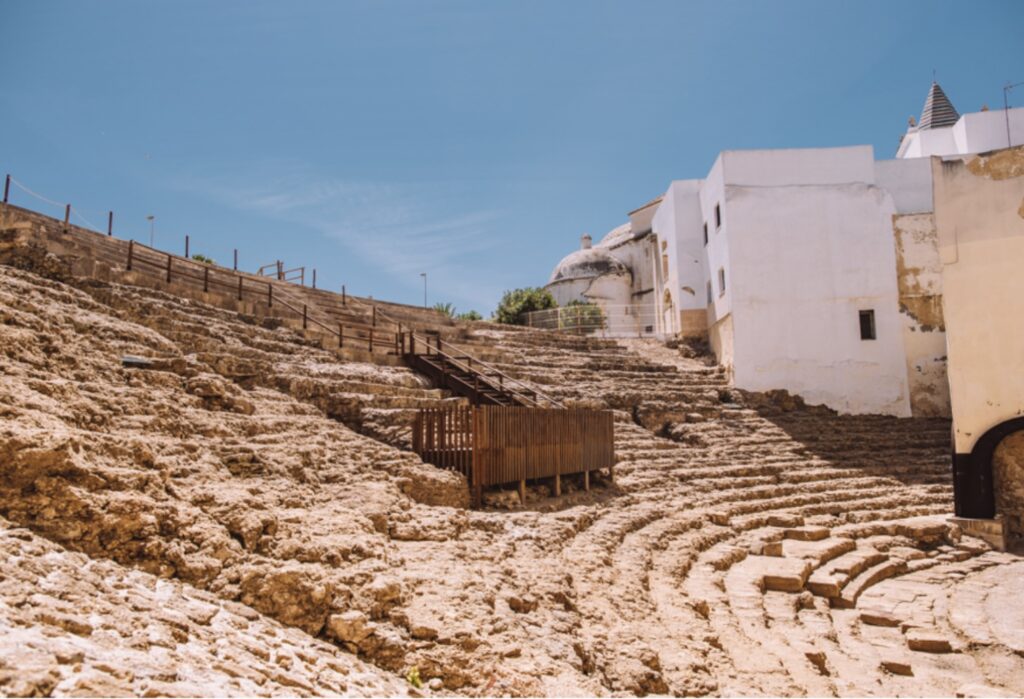
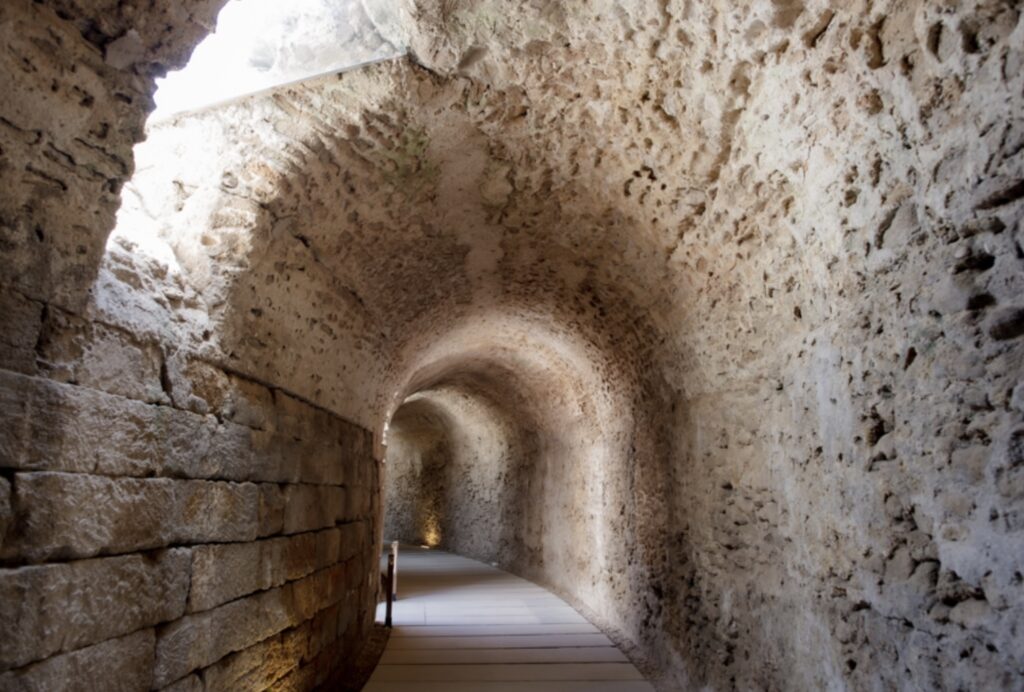
- Castillo de San Sebastián: Located on a small island, this 18th-century fortress offers scenic views and is a popular spot for photography and walks.
- Castillo de Santa Catalina: A star-shaped fortress built in the 16th century to defend the city. It now serves as a cultural center hosting various exhibitions and events.
- Plaza de San Juan de Dios: A central square featuring the Town Hall and the Church of San Juan de Dios, known for its vibrant atmosphere and historic architecture.
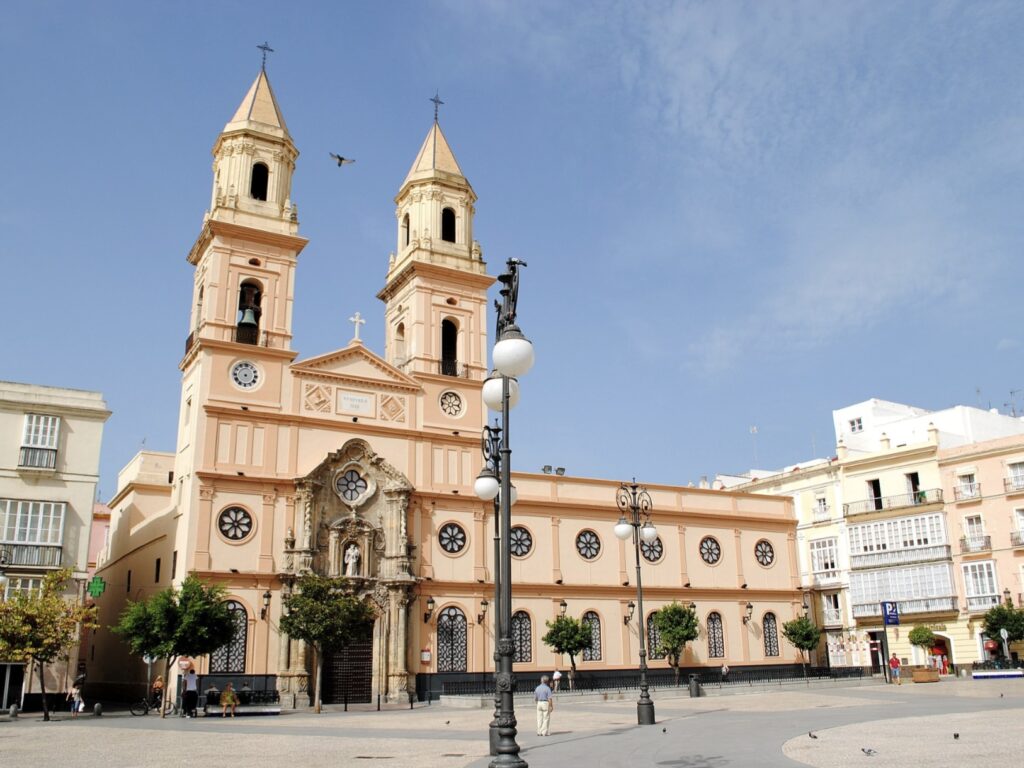
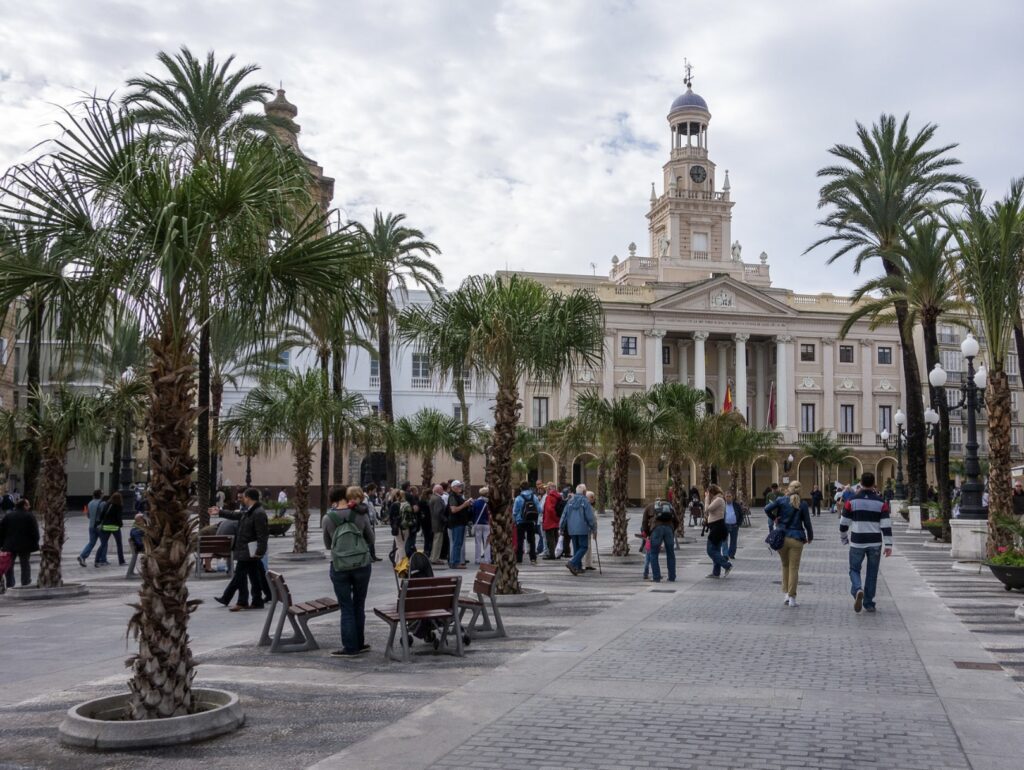
Tourist Attractions
- La Caleta Beach: A picturesque beach located between the castles of San Sebastián and Santa Catalina. It is famous for its sunsets and historical significance.
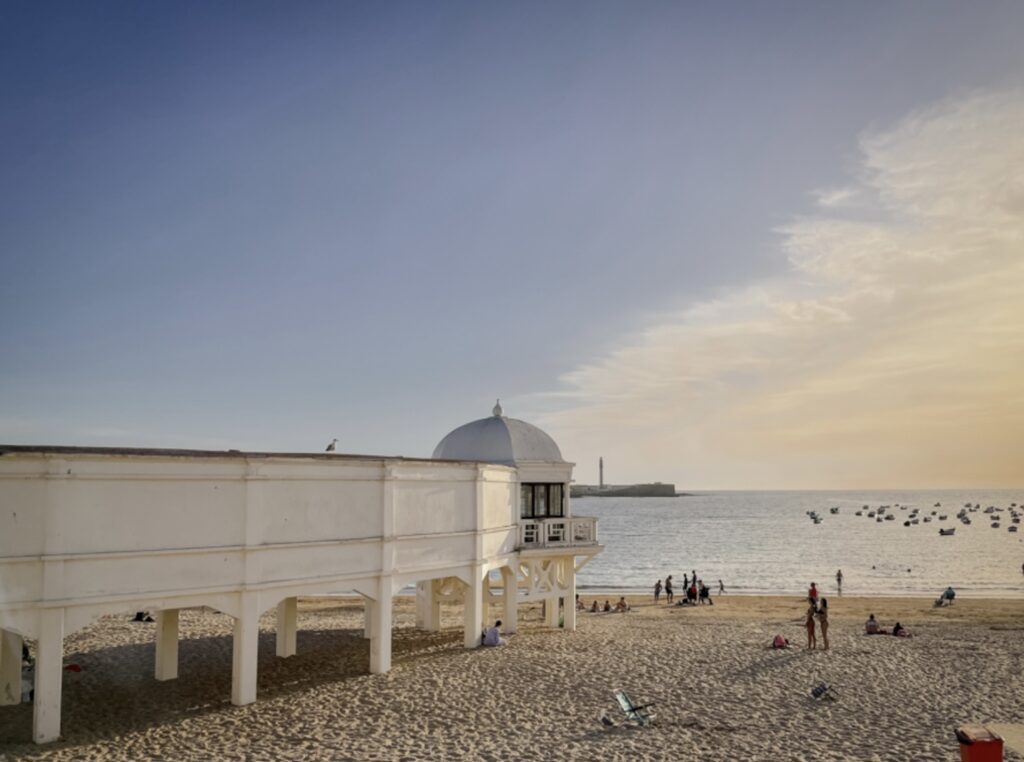
- Playa de la Victoria: A long, sandy beach that is popular with both locals and tourists. It offers numerous amenities, restaurants, and beach bars.
- Parque Genovés: A beautifully landscaped park featuring exotic plants, a pond with ducks and swans, and a waterfall. It’s a great place for a relaxing stroll.
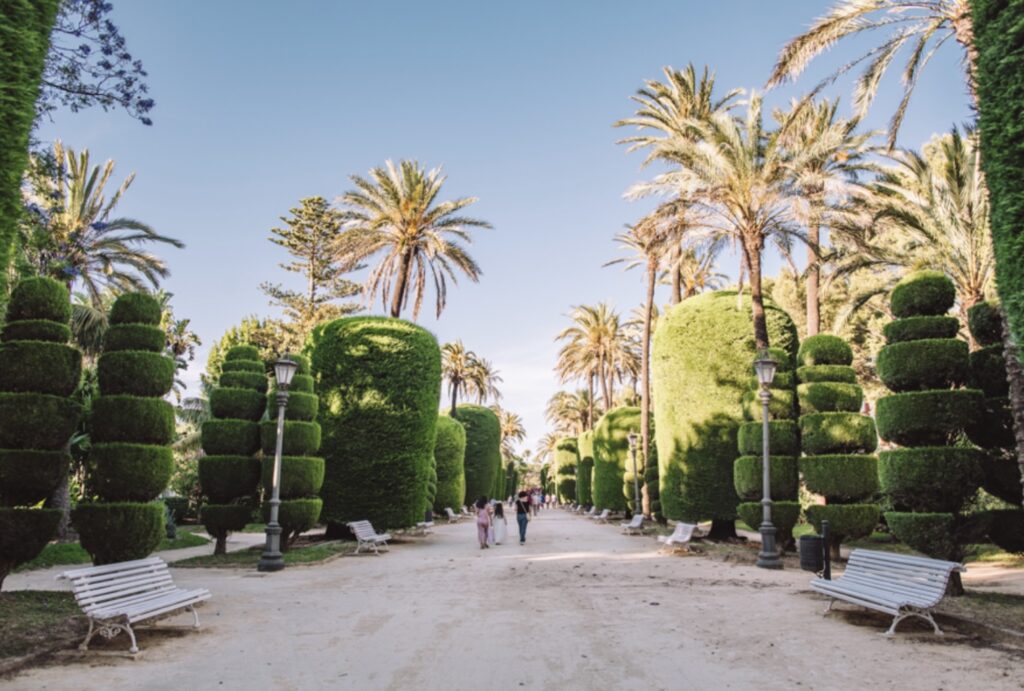
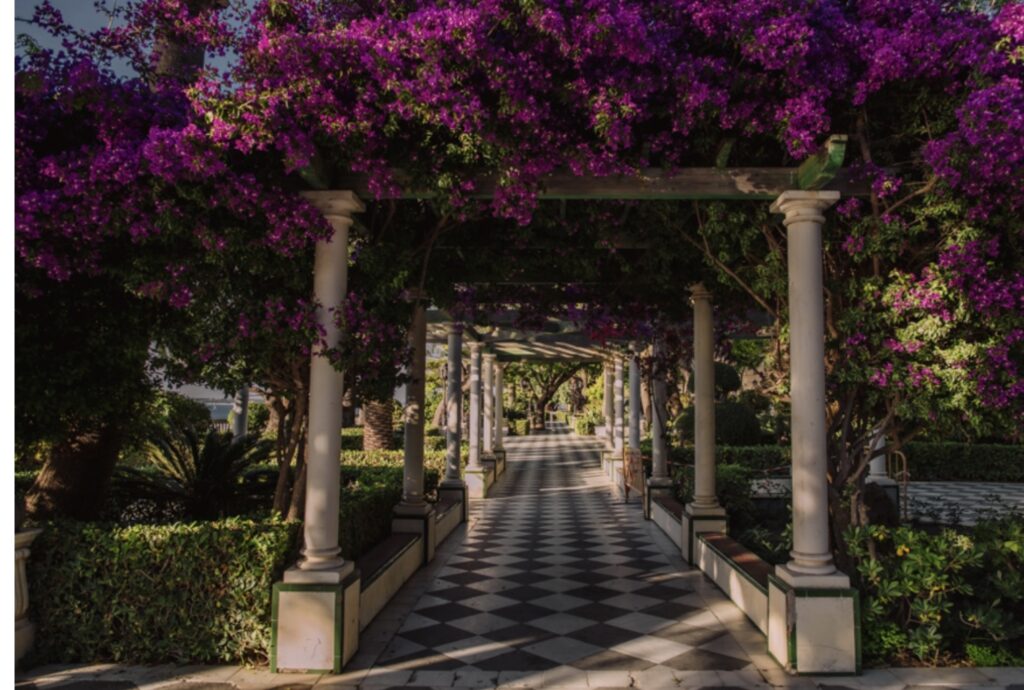
- Museum of Cádiz: This museum showcases the city’s rich history with exhibits ranging from Phoenician and Roman artifacts to fine arts and contemporary works.
- Gran Teatro Falla: A historic theater known for its striking Moorish Revival architecture. It hosts numerous cultural events, including the famous Carnival of Cádiz performances.
- Cádiz Central Market: A bustling market where visitors can experience local life and enjoy fresh seafood, produce, and other local delicacies.
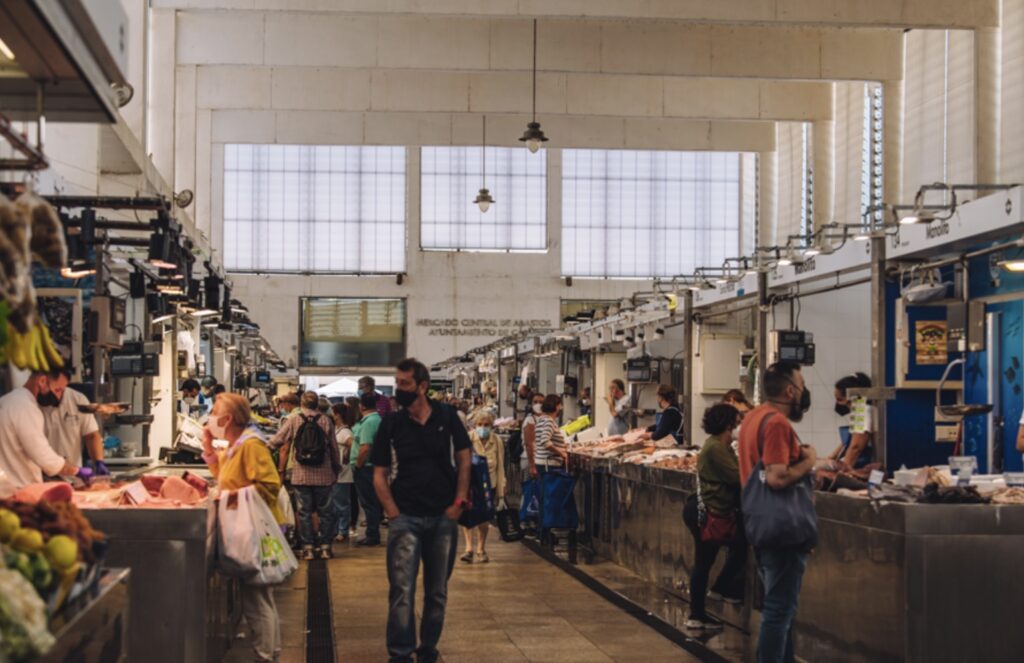
- Oratorio de la Santa Cueva: A neoclassical chapel known for its stunning paintings by Francisco de Goya and its unique subterranean church.
- El Pópulo: The oldest neighborhood in Cádiz, characterized by narrow, winding streets and historic buildings, including the Arco de la Rosa and the Casa del Almirante.
Cultural Events
- Carnival of Cádiz: One of the most famous carnivals in Spain, featuring elaborate costumes, parades, and musical performances, especially the satirical chirigotas.
Cádiz is a city rich in history and culture, offering a diverse array of attractions that reflect its long and varied past.
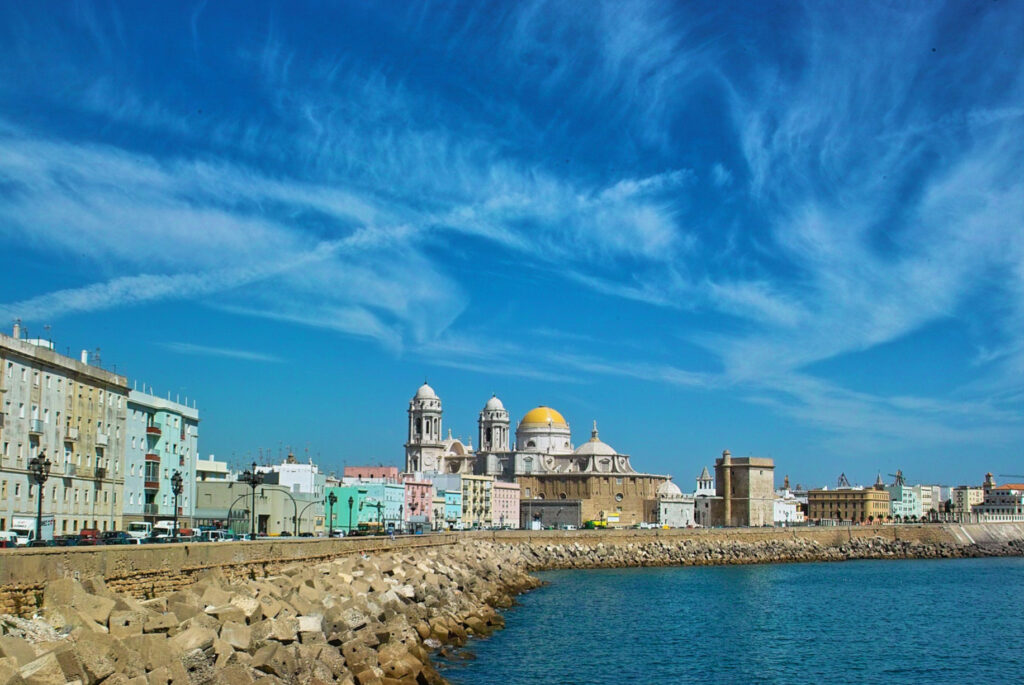
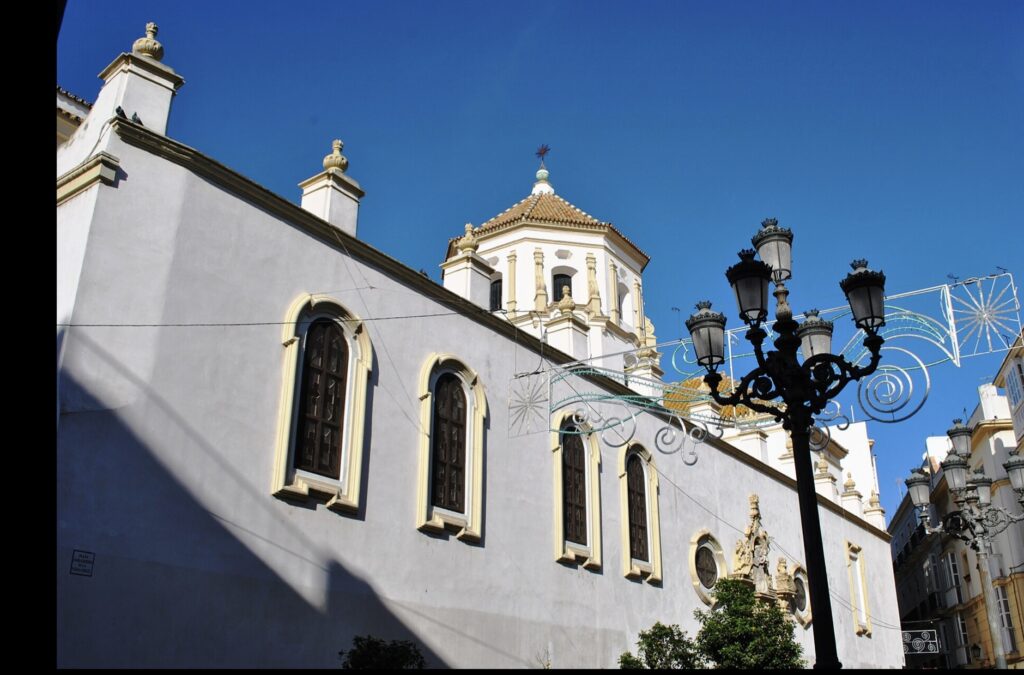
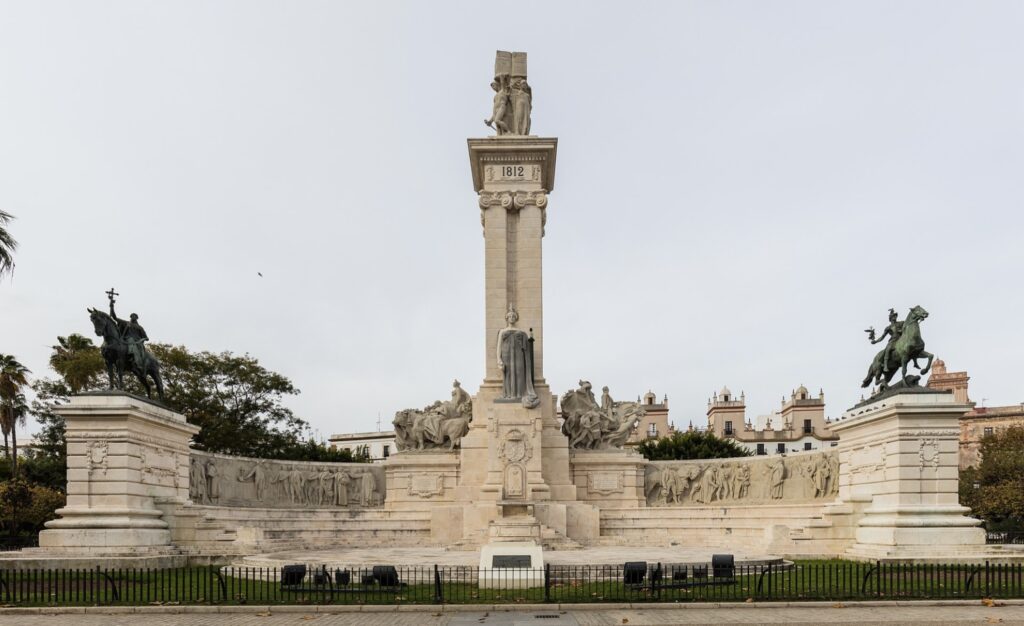
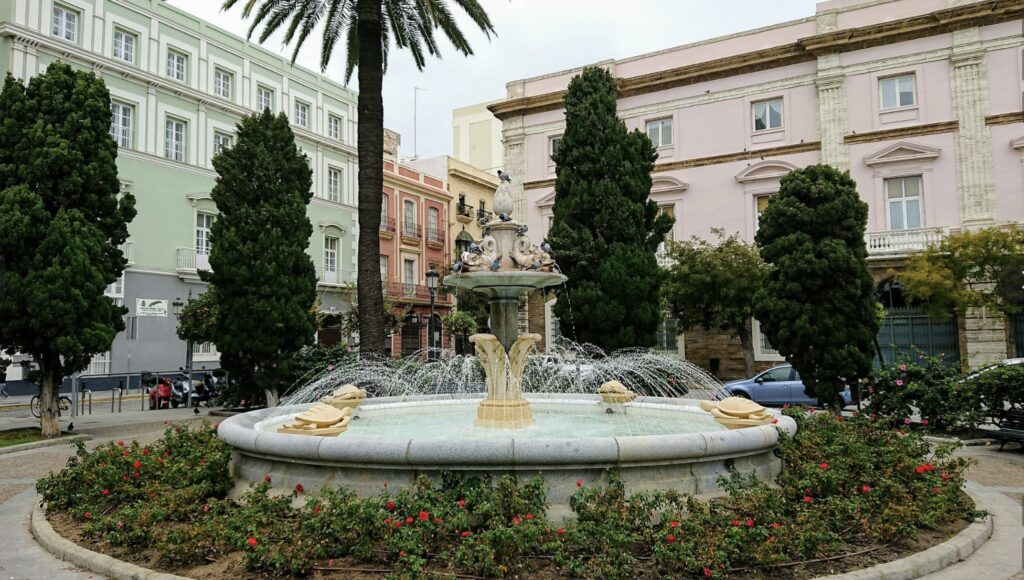
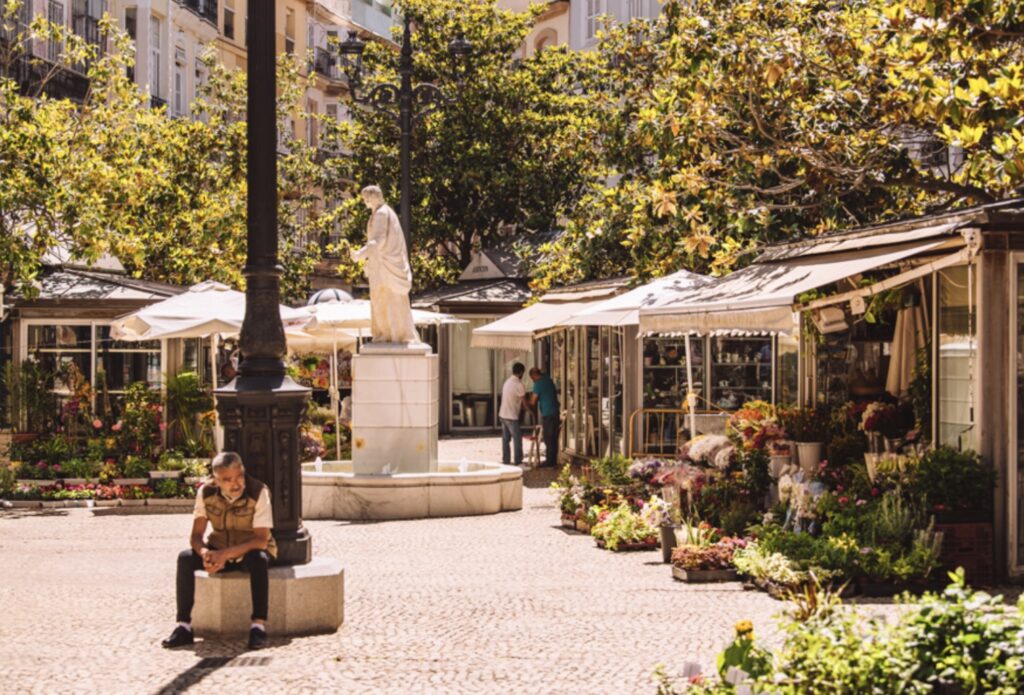
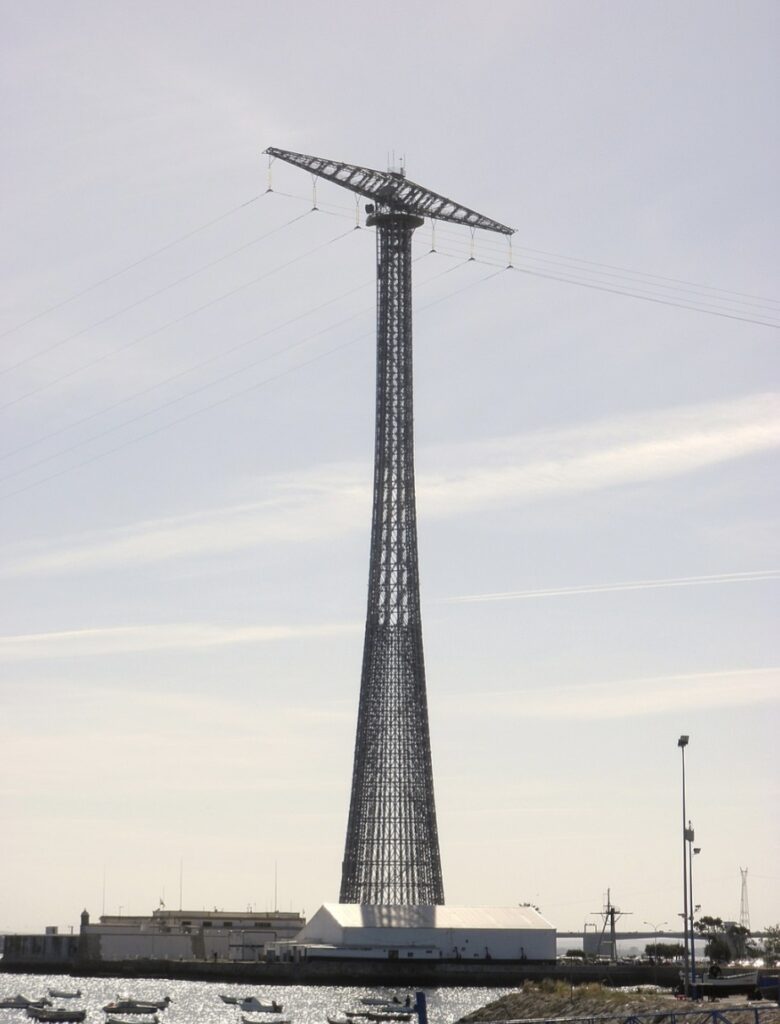
Cádiz, being a city with a long history, has experienced many cultural influences, including Visigothic and Islamic periods. However, due to subsequent reconstructions, renovations, and the passage of time, there are few direct remnants from these periods. Here are some insights:
Visigothic Period
- San Juan de Dios Church: While primarily a Baroque church, it is believed to be built on the site of earlier religious structures dating back to the Visigothic and early Christian periods. Archaeological findings suggest that the area has been a religious site for many centuries.
Islamic Period
- Archaeological Remains: While no grand monuments from the Islamic period remain intact in Cádiz, archaeological excavations have uncovered various artifacts and structural remains that indicate the presence of Islamic influence. These finds include pottery, coins, and foundations of buildings from the period of Muslim rule.
- Street Layout: The old town of Cádiz retains a street layout that reflects its medieval past, including the Islamic period. The narrow, winding streets typical of Islamic urban planning can still be seen in the El Pópulo and Santa María neighborhoods.
While Cádiz may not have many prominent monuments specifically from the Visigothic and Islamic periods, the city’s historical layers can be appreciated through its archaeological sites and the influences visible in its urban fabric and historical architecture.
The narrow, winding streets characteristic of Islamic urban planning were designed with several practical and cultural considerations in mind:
Practical Considerations
- Climate Control:
- Shade and Coolness: Narrow streets provide ample shade, which helps keep the area cooler in hot climates. The close proximity of buildings reduces direct sunlight, creating a more comfortable environment for residents.
- Wind Channels: The winding nature of the streets helps to channel and amplify cooling breezes, improving air circulation in the densely built urban environment.
- Defense and Security:
- Protection Against Invaders: Winding streets are harder for invaders to navigate, providing a defensive advantage. The complex layout can confuse and slow down potential attackers.
- Controlled Access: The maze-like structure of streets makes it easier to monitor and control access to different parts of the city, enhancing security.
Cultural and Social Considerations
- Privacy:
- Seclusion: In Islamic culture, privacy is highly valued. Narrow streets with high walls and few windows facing the street help to ensure the privacy of homes and courtyards from passersby.
- Social Interaction: The intimate nature of the streets fosters a sense of community, allowing for more frequent and casual interactions among neighbors.
- Land Use Efficiency:
- Maximizing Space: The irregular and compact layout makes efficient use of available land, allowing for higher density development within the city’s walls. This was particularly important in medieval times when city space was often limited.
- Cultural Aesthetics:
- Organic Growth: The streets often developed organically over time, reflecting the natural growth and evolution of the city rather than following a pre-planned grid system. This organic development contributed to the unique character and charm of the urban landscape.
Examples in Islamic Cities
These principles of urban planning can be seen in many historic Islamic cities, such as the medinas of Fez and Marrakech in Morocco, the old town of Cairo in Egypt, and the Albayzín neighborhood in Granada, Spain. In these cities, the narrow, winding streets contribute to their distinctive atmosphere and functionality.
In summary, the narrow, winding streets of Islamic urban planning served to create a comfortable living environment, enhance security, maintain privacy, and efficiently use urban space, while also fostering community interaction and reflecting cultural values.
Certainly! Here’s an updated one-day itinerary for history enthusiasts visiting Cádiz, incorporating local food specialties:
Morning
9:00 AM – Breakfast at Plaza de San Juan de Dios
- Start your day with breakfast at one of the cafes in Plaza de San Juan de Dios. Try “tostada con tomate y jamón” (toasted bread with tomato and ham) and a cup of strong Spanish coffee.
10:00 AM – Cádiz Cathedral
- Visit the Cádiz Cathedral, known for its impressive baroque-neoclassical architecture and golden dome. Climb the bell tower for panoramic views of the city.
11:00 AM – Roman Theatre
- Explore the nearby Roman Theatre, one of the largest of its kind in Spain. Learn about its history and significance during Roman times.
11:45 AM – Torre Tavira
- Head to Torre Tavira, the highest watchtower in Cádiz. Experience the camera obscura, which offers a unique way to see live images of the city.
Midday
12:30 PM – Walk through El Pópulo Neighborhood
- Stroll through the El Pópulo neighborhood, the oldest part of Cádiz. Discover the Arco de la Rosa and the Casa del Almirante while enjoying the narrow, winding streets.
1:00 PM – Visit Oratorio de la Santa Cueva
- Visit the Oratorio de la Santa Cueva, a neoclassical chapel famous for its stunning Goya paintings and unique subterranean church.
1:45 PM – Lunch at Mercado Central de Abastos
- Have lunch at the Mercado Central de Abastos. Sample local specialties like “tortillitas de camarones” (shrimp fritters), “pescaito frito” (fried fish), and “boquerones” (marinated anchovies). Pair your meal with a glass of “Manzanilla” sherry, a local wine.
Afternoon
3:00 PM – Castillo de Santa Catalina
- Explore the Castillo de Santa Catalina, a 16th-century star-shaped fortress. Walk around the grounds and enjoy the views of the Atlantic Ocean.
4:00 PM – Castillo de San Sebastián
- Continue to the nearby Castillo de San Sebastián, located on a small island. This 18th-century fortress offers beautiful coastal views and is an excellent spot for photography.
5:00 PM – Museum of Cádiz
- Visit the Museum of Cádiz to see its extensive collection of artifacts, including Phoenician sarcophagi, Roman statues, and fine arts. This museum provides a comprehensive overview of the city’s rich history.
Evening
6:30 PM – Relax at La Caleta Beach
- Head to La Caleta Beach, situated between the two castles you visited earlier. Relax on the beach, take a swim, or simply enjoy the sunset.
8:00 PM – Dinner at a Local Restaurant
- Finish your day with dinner at a traditional restaurant. Enjoy local dishes such as “atún rojo” (red tuna), “rabo de toro” (oxtail stew), and “gambas al ajillo” (garlic shrimp). Try “flan de huevo” (egg flan) or “tocino de cielo” (a local dessert made with egg yolks and sugar) for dessert.
9:30 PM – Evening Stroll
- Take a leisurely evening stroll through the illuminated streets of the old town, soaking in the historic ambiance. Perhaps stop by a local bar for a nightcap, enjoying “vino fino” or another sherry.
This itinerary blends Cádiz’s historical landmarks with its culinary delights, offering a rich and immersive experience for history enthusiasts.
